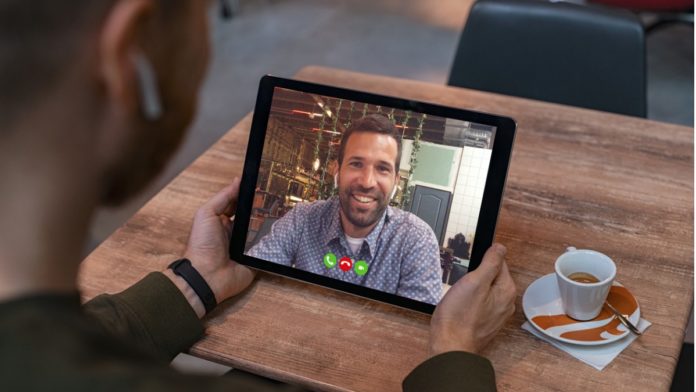
In this point of view, Cecile Alper-Leroux, vice president of HCM Innovation at Ultimate Software, explains how managers can use communications to guide their teams through times of crisis.
A lot of what my team and I do here at Ultimate Software involves predictions, albeit predictions grounded in research, but there is always a little crystal ball thrown in. Seeing into the future of work, and doing what we can do to prepare as many people and businesses for it as possible, is our mission. All that said, we could not have seen the extent of this massive shift coming.
Late last year, our HCM Innovation team released our annual list of upcoming HR megatrends, with a focus on developing a more adaptive workforce being one of them. Admittedly, the current situation happening amidst a novel coronavirus (COVID-19) outbreak is not what we had in mind at the time. However, that notion is even more relevant now.
Managers: Your newly remote or displaced employees need you now more than ever. But you can't lead if you can't communicate. @cecilehcm @ultimatehcm #HR #RemoteWorking Share on XManagers Need to Adapt–And Fast
We are all experiencing massive disruption from a global pandemic that has changed the way we work almost overnight. Uncertainty has become a common thread among us, and we are all doing our best to adapt. In times of great uncertainty, we often look to leaders for direction–and that includes managers.
Your remote or displaced employees need you now more than ever, but you cannot lead if you cannot communicate. Pivoting to establish effective and completely new lines of communication between you and your new remote workforce should be one of your top business priorities.
For the past six years, my team and I have developed our own strategies for effective communication–all while balancing a significant amount of remote work and business travel. Here are some of the best practices that have worked for us along the way.
Get the Right Tools, Right Now

Cecile-Alper Leroux
The technology you and your team have access to right now can make or break your communications and outcomes. Slow or choppy connections will leave your team confused and frustrated when trying to convey potentially critical pieces of information.
Now is a great time to take inventory of the communication tools available to you and your team. There are many collaborative solutions out there that may work for you. Each of these services, of course, has their individual pros and cons, so there’s no need to invest significant resources in the new. Sometimes a group mobile phone chat is the best way to quickly communicate and add some much-needed humor to the difficult situation we’re in.
Additionally, the features that others find useful may be of no use to some of your team members or to your team as a whole. Accessibility is critically important in times like these to ensuring that everyone on your team, regardless of their capabilities and preferences, can communicate effectively and authentically while working remote. As you find the right cloud-based solutions for you and your team, it’s totally okay to experiment. Course correcting along the way is expected in order to find the best methods of communication with your team, depending on its needs.
Re-Establish A Sense of Normalcy
While every team is different, there are many people who enjoy the small opportunities for socializing that are present within an office setting. In the time it takes to get up and brew a cup of coffee, many of us stumble into impromptu, yet enriching, conversations with teammates or anyone within the range of our voices. These instances provide a revitalizing break from the valuable work we do all day.
Luckily, remote work doesn’t have to be the end of these restorative moments of humanity. All that changes is how we initiate these interactions. Instead of dialogue happening by chance, it can happen by design. It ideally gives you an opportunity to de-stigmatize and de-mystify the interruptions of children newly at home from school, as well as pets.
Making the effort to carve out time for casual, social experience (even from home) can go a long way toward reducing employee fatigue and burnout. Social isolation should not be an outcome of the new mandates to limit social contact. Chatrooms are great spaces to create virtual break rooms where people can catch up or simply share a laugh. Taking the time to schedule a “virtual happy hour,” or other casual call with colleagues we’d normally speak with in the office, will keep our relationships strong. Team leaders may also want to establish weekly virtual office hours so that people have the freedom to reach out. We must take these measures now to preserve these connections for the other side of “social distancing.”
Personalize Your Communication Methods
While you may have a preferred communication service for collaborating with groups en masse, being flexible for the preferred service of the individual members of your team will help to nurture valuable and effective conversations.
Of course, it will be tempting to limit everyone to a single communications tool. After all, no one really wants to learn the different features of each solution, right? But if we’re prioritizing effective communication, then personalization is key. It’s also a cornerstone of accessibility and adaptation at work. We cannot assume that video meetings are going to work for everyone. For neurodiverse people, some communication methods add stress and can result in shutting down. That’s the opposite of what we need most, which is understanding and compassion in these already trying times.
Your team members want you to acknowledge their individuality. Some people have preferences for using email, audio or video chat. Trying to force everyone to adhere to a single method or medium risks putting your people in situations in which they cannot communicate in a clear and comfortable way–sacrificing valuable information, dialogue and collaboration in the process.
Be Mindful of Virtual Body Language
In-person meetings provide a lot of nuance that’s not always present in online communications. Facial expressions, anxious fidgeting and all our other social queues become difficult, or impossible, to pick up on. Without this body language it can become challenging as a manager to notice when there’s an opportunity for you to help, whether by stepping in or stepping back. There is, however, virtual body language that you can learn to pick up on.
Like traditional body language, virtual body language is all about non-verbal communication–the things we say without saying them. For example, uncharacteristic levels of silence on calls or consistently missing emails might indicate that something’s wrong. Although engagement typically rises when employees are given the option to work from home, the current circumstances certainly warrant some special attention.
It’s important to note though that any virtual body language you may pick up on doesn’t have to be the precursor for a call to HR. Instead, it can be the starting point of a conversation. Remember that many of your employees, and potentially even you, are still getting used to working outside of the office and may have the added stress of home-schooling or caring for young children or elderly parents. Some employees may have a partner out of work entirely, adding financial strain.
These shifts present new challenges that might not be immediately known or understood. Take the time to talk through any out of the ordinary or troubling virtual body language cues with your team to avoid unintentional damage to the trust you’ve built. Over-communicating is hard to do at times like these, as is listening to your employees. These are necessary skills for all of us.
These are the adjustments and practices that have helped my team and me succeed in a virtual world over the years, but I fully expect the state of remote work to undergo radical changes during, and after, this unprecedented and unexpected shift. But as they say, “necessity is the mother of innovation.” I’m confident that we’ll all rise to the occasion.
For even more tips on how to successfully manage a virtual workforce, download our whitepaper here.
Cecile Alper-Leroux is vice president of HCM Innovation at Ultimate Software. She writes and speaks extensively on the changing worker and workforce.
Ultimate Software is a leading global provider of cloud-based human capital management and employee experience solutions, with more than 51 million people records in the cloud. Based in Weston, Fla., Ultimate Software is a sponsor of the HCM Technology Report.
Is the coronavirus impacting your company’s business? Send us an email and let us know.
Sign up for our newsletter here.
Image: iStock














